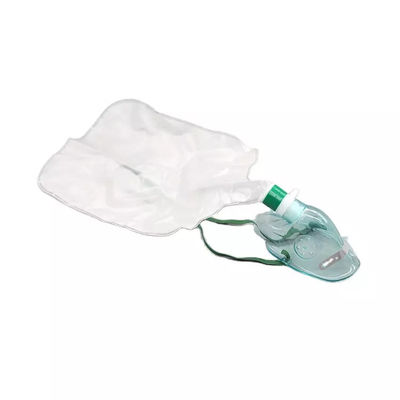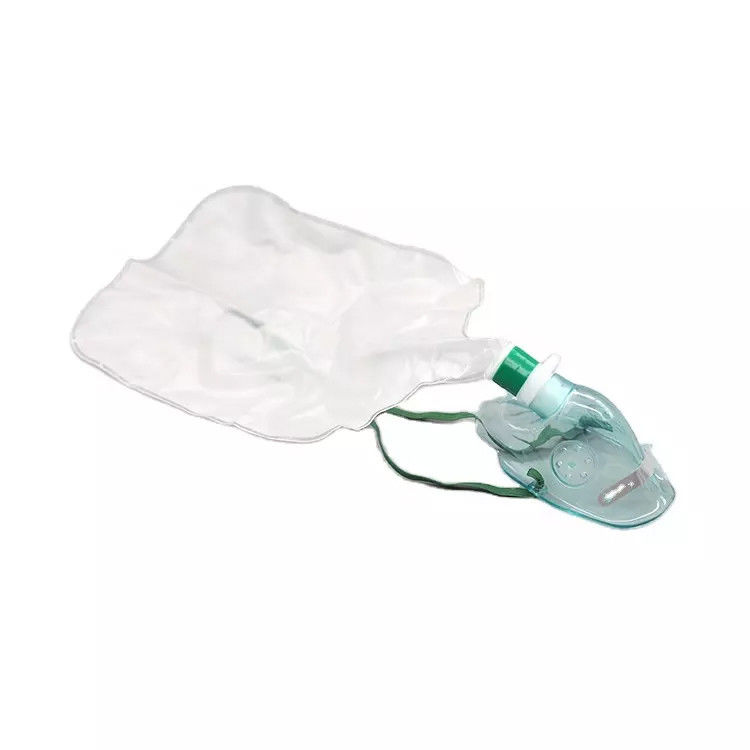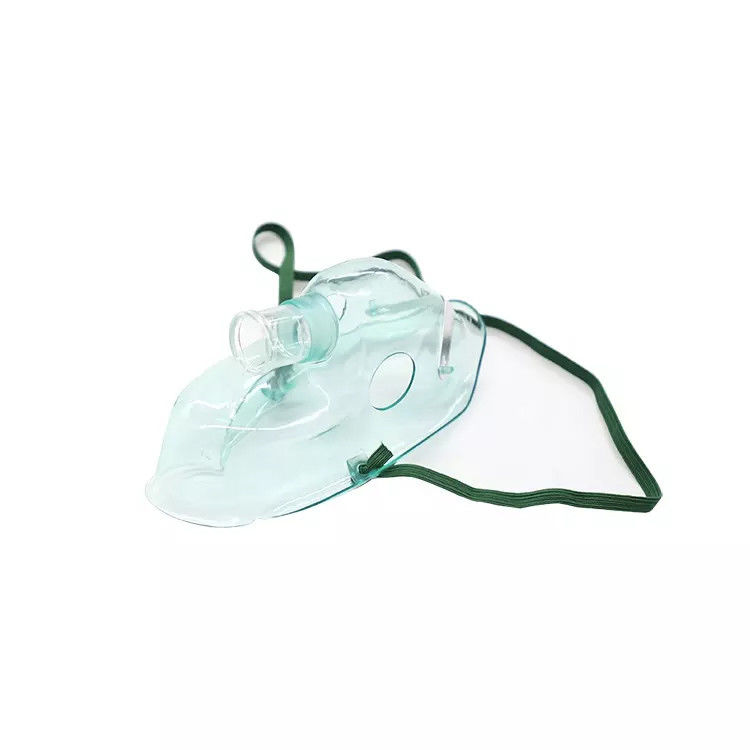-
Highlight
PVC Non Rebreather Mask
,Medical Grade Non Rebreathing Mask
,Non Rebreather Mask With Reservoir Bag
-
Product NameNon-Rebreathing Mask With Reservoir Bag
-
ApplicationHigh-Concentration Oxygen Mask
-
PropertiesRespiratory Products
-
MaterialMedical Grade PVC
-
Disinfecting TypEOS
-
Quality CertificationCE,ISO13485
-
ColorGreen ,Clear
-
OEMAcceptable
-
UsageFor Oxygen Therapy In Medical Settings
-
Nose ClipAdjustable, Non-adjustable
-
GradeClass II
-
DisposableYes
-
Place of OriginChina
-
Brand NameHenan Aile
-
CertificationCE
-
Model NumberNon-rebreathing mask
-
Minimum Order Quantity5000pcs
-
PriceNegotiable
-
Packaging DetailsIndividually packaged
-
Delivery Time15-30days
-
Payment TermsL/C, T/T
-
Supply Ability1000000 Piece/Pieces per Month
Medical Grade PVC Non Rebreather Mask With Reservoir Bag
Non-rebreather Mask PVC Non Rebreather Mask Oxygen Mask with Reservoir Bag
A non-rebreather mask is a type of oxygen delivery device used in medical settings to provide high-concentration oxygen to patients. It is designed to deliver a high flow of oxygen and prevent the rebreathing of exhaled gases, thus ensuring a continuous supply of fresh oxygen.
A medical-grade PVC non-rebreather mask with a reservoir bag is a type of oxygen delivery device used to administer high-concentration oxygen to patients.
Design: The non-rebreather mask is typically made of medical-grade PVC, which is a durable and transparent material. It covers the patient's nose and mouth, creating a seal to deliver oxygen effectively.
Reservoir Bag: The mask features a reservoir bag attached to it. The reservoir bag is made of flexible PVC and can hold a significant amount of oxygen. It acts as a reservoir, ensuring a continuous supply of high-concentration oxygen to the patient.
One-Way Valves: The non-rebreather mask is equipped with one-way valves. These valves allow oxygen to flow from the reservoir bag to the patient during inhalation but prevent the mixing of exhaled air with the delivered oxygen during exhalation. This helps maintain a high oxygen concentration for the patient.
Oxygen Flow Rate: The oxygen flow rate is adjustable and controlled by an oxygen source or flow regulator. The flow rate is set based on the patient's prescribed oxygen requirements and condition.
Oxygen Concentration: The non-rebreather mask with reservoir bag is designed to deliver a high concentration of oxygen, typically above 90%. The reservoir bag ensures that the patient breathes in oxygen directly from the bag, minimizing the dilution of oxygen with room air.
Adjustable Fit: The mask may have an adjustable nose clip and elastic straps to secure it in place and provide a comfortable fit for the patient.
Non-rebreather masks with reservoir bags are commonly used in situations where high concentrations of oxygen are required, such as in emergency departments, intensive care units (ICUs), or during resuscitation efforts. They are particularly beneficial for patients experiencing severe hypoxemia or respiratory distress.
![]()
Feature:
Probides a high concentration of oxygen.
Offered with head strap and adjustable nose clip.
The star lumen tubing can ensure oxygen flow even if the tube is kinked.
The standard length of tube is 2.1m, and different length is available.
![]()
![]()
| Product Name | No Breath Oxygen Mask |
| Feature | portable |
| Function | Helping Breath |
| Sample | Sample |
| Color | Customized |
What is the purpose of the reservoir bag on the non-rebreather mask?
The reservoir bag attached to a non-rebreather mask serves several important purposes in the delivery of high-concentration oxygen therapy. Here are the main functions of the reservoir bag:
Oxygen reservoir: The reservoir bag acts as a temporary storage or reservoir for oxygen. It allows a larger volume of oxygen to be available for the patient during inhalation, ensuring a continuous and consistent supply of high-concentration oxygen. This is especially important in situations where a high flow rate is required or when the patient's oxygen demand fluctuates.
Preventing entrainment of room air: The reservoir bag helps prevent the entrainment of room air into the mask during inhalation. The bag acts as a buffer, providing a source of pure oxygen that dilutes the exhaled gases and minimizes the risk of rebreathing carbon dioxide or other exhaled gases. The one-way valves in the mask allow the inflow of oxygen from the oxygen source into the mask, while the reservoir bag helps maintain a higher concentration of oxygen.
Assisting with breath detection: The reservoir bag's inflation and deflation can serve as a visual indicator of the patient's respiratory effort. When the patient inhales, the bag should deflate as the oxygen is drawn into the lungs. When the patient exhales, the bag should inflate as the exhaled gases are vented out. This visual feedback can help healthcare providers monitor the patient's respiratory pattern and ensure proper ventilation.
Enhancing oxygen delivery efficiency: The presence of the reservoir bag helps increase the efficiency of oxygen delivery. It ensures that the patient receives high-concentration oxygen with minimal dilution by room air, improving the effectiveness of the therapy.
It's important to note that the reservoir bag should be properly inflated during use to ensure adequate oxygen reservoir and prevent collapse of the bag. Healthcare professionals monitor the bag's inflation to ensure optimal oxygen delivery and adjust the oxygen flow rate as needed.
![]()
Is a non-rebreather mask 100% oxygen?
A non-rebreather mask is capable of delivering a high concentration of oxygen, but it does not necessarily provide a constant 100% oxygen concentration. The actual oxygen concentration delivered by a non-rebreather mask can vary depending on several factors, including the oxygen flow rate, the patient's breathing pattern, and the mask fit.
When used correctly and with an adequate flow rate, a non-rebreather mask can deliver oxygen concentrations in the range of 60% to 80% or higher. The high concentration is achieved by supplying a high flow rate of oxygen and utilizing one-way valves to prevent the entrainment of room air.
However, it's important to note that a non-rebreather mask may not consistently deliver 100% oxygen due to the potential for small amounts of room air to be entrained, especially during exhalation. The reservoir bag helps minimize the dilution of oxygen by room air, but some mixing may still occur.
For situations where a precise and consistent 100% oxygen concentration is required, other devices such as a high-flow nasal cannula or a ventilator with a closed circuit may be used.
What is a non breath oxygen mask?
A non-rebreather mask is a medical device that helps deliver oxygen in emergency situations. It consists of a face mask connected to a reservoir bag that's filled with a high concentration of oxygen. The reservoir bag is connected to an oxygen tank. The mask covers both your nose and mouth.



